Victoria and Albert Museum
Designing a sensory and embodied experience of the V&A's online collection
Physical and Digital Experience | Augmented Reality
student project, MAUX LCC | team: Manali Panchal and Max Hain


introduction
Collaborating with the Victoria and Albert (V&A) Museum was a part of the MA UX course, at London College of Communication, UAL. We worked to design a sensory embodied experience of the V&A's online collection. This led to the creation of a physical and digital pop-up museum. The multi-layers of this augmented reality experience could also work as a learning tool for people interested in various fields like art, design, architecture, textiles, interiors, product design.
Being able to reconfigure and reassemble elements to expand the collection beyond the museum, reaching new audiences, or touching those familiar with its collection in new ways was the aims for this project
movements, people, and surroundings in a virtual world
This project was during the COVID pandemic lockdown when museums were exclusively online. Challenges originated in the missing spatial and tactile access of the collections and the hall, which we observed as an essential experiential element to provide for a unique museum visit.
Understanding the range of movements, what people expect during their visit and how the surrounding impacts the entire experience was our first area of exploration and inquiry. Using Laban's movement theory analysis (LMA) we tried to create connections and interactions using a combination of the digital and physical. This was explored by experimenting with movements that are possible in a virtual world, allowing for the experience to enter the space of the viewer.
How can we bring the V&A museum to someone staying miles and miles away, apart from just scrolling through a website? How can the virtual world give online visitors the feeling of having visited a museum? Were the questions we had in mind while brainstorming our design.


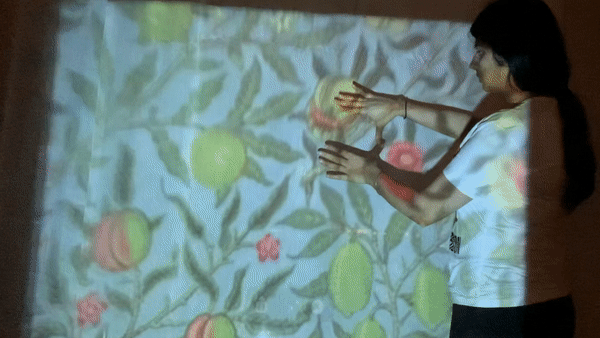
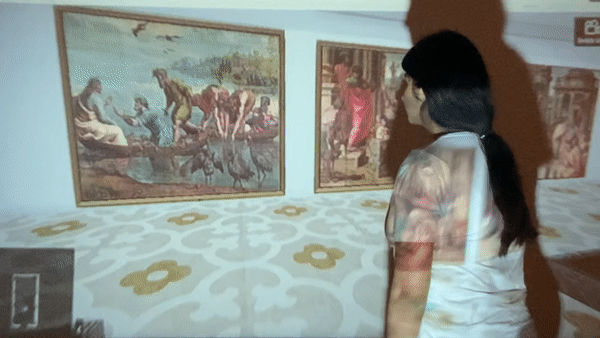
Experimenting with interactions and creation of a surrounding in a physical-digital space
This body-storming got us to extend these interactions through the lens of a smartphone. We looked at the sensors of movement, light, touch, sound, and temperature available in a smartphone and what kinds of interactions we could use for our experience.
recontextualising textures - going beyond
A visit to a museum always ends with taking something home as a memory, or memento. With an online experience, we saw the disappearance of this intimate feeling. We wanted to retain this and integrate it as part of our design. The experiments of interactions revealed a digital-native mindset inquiry: What differentiates a virtual object or exhibition from a physical one? How can we treat this project beyond digital replicating?
We used augmented reality assisted by Adobe Aero and prehensions of phone sensors to create initial prototypes of our pop-up museum. We designed this to be an extension of the collections page from the existing V&A's website.
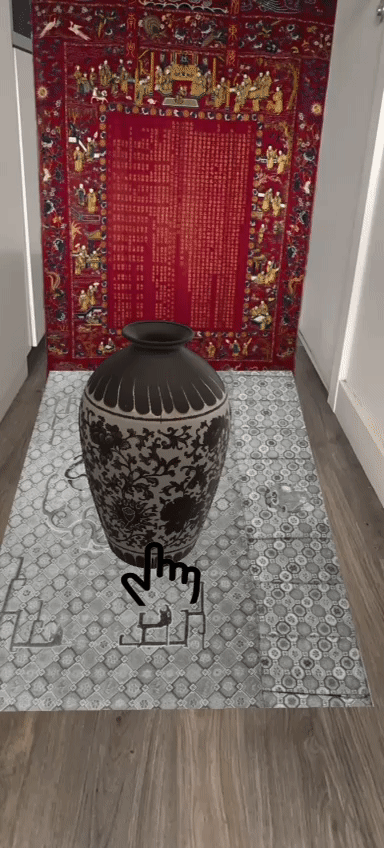
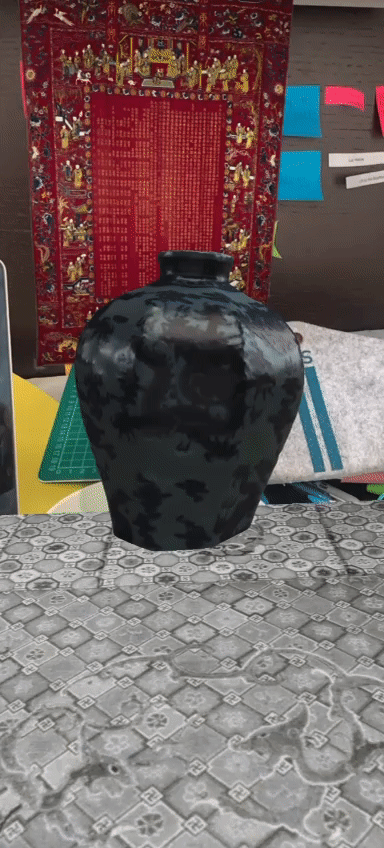
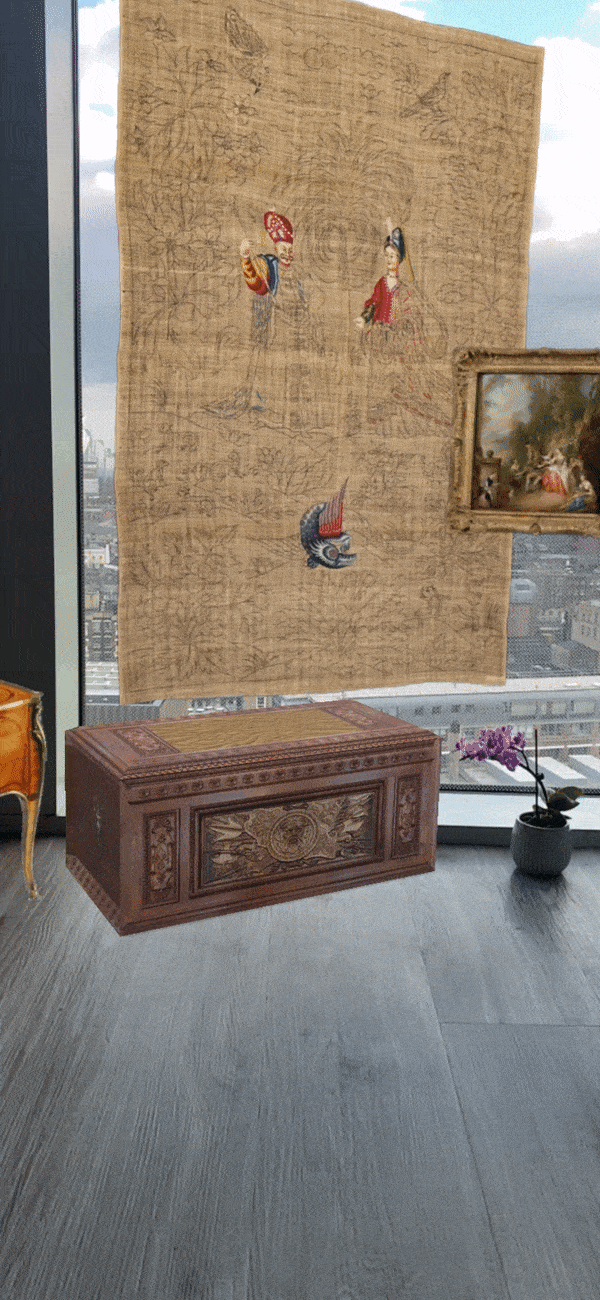
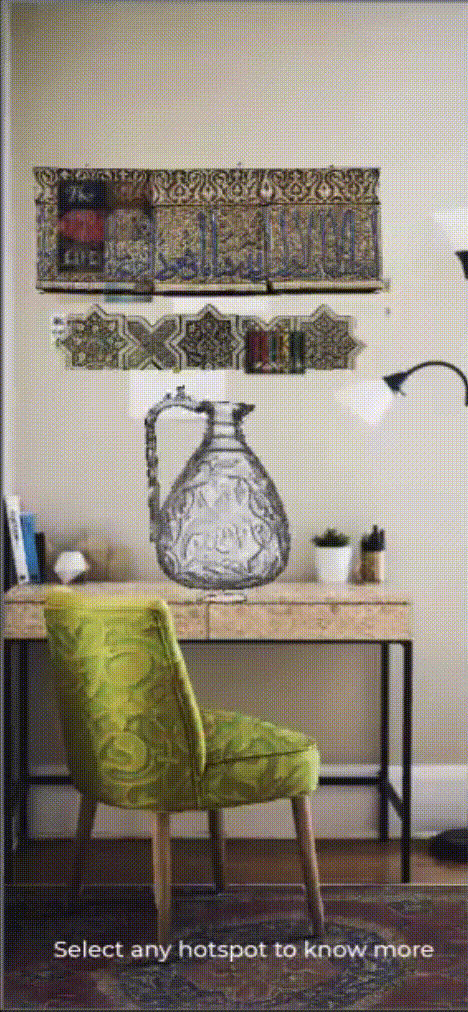
Experimenting with augmented reality and the prehensions of the phone sensors to create layered interactions
sensory embodied experience
Multiple rounds of prototypes, iterations, and testing shaped the sensory embodied experience of the V&A's online collections. This virtual experience was supported by having the option of a physical element by making the chosen artifact and scanning that object to reveal its original form and textures.
Reconfiguring elements to expand the collection beyond the museum transformed the space by recontextualising textures and patterns, situated the viewer in the world of the artifact being viewed.
An explainer video of the functions and features of the final experience

Journey map of the entire flow of the experience

Browsing through an artefact category

My curations page


How the artefact has been made hotspot
Visual representation of the recontextualisation of the space via the toggle
This sensory embodied experience was designed as a way for collections to go beyond the walls of the museums and enter the spaces of home, work, or school. If scaled it has the ability to transform into a learning tool and can be a great advantage for researchers and students in the relevant fields.
The entire project can be seen on my blog: https://mehtas1702.wixsite.com/blog/copy-of-collaborative-unit
